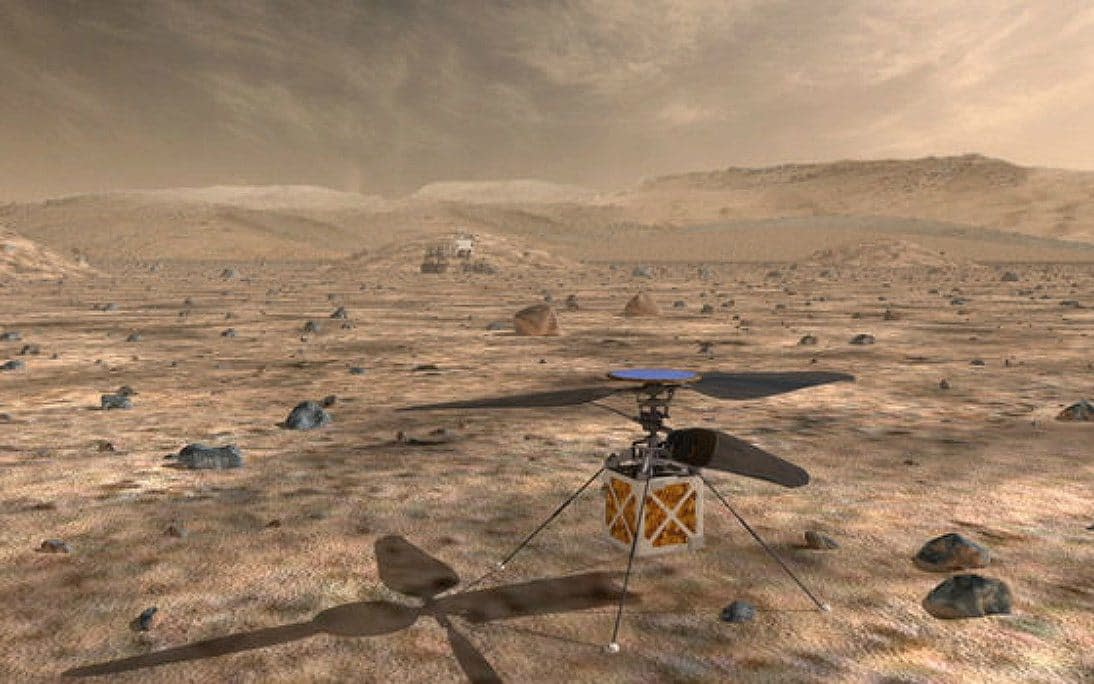Nasa is sending a helicopter to search the skies over Mars

Scientists at Nasa have announced that they are sending a helicopter to Mars.
The small, autonomous rotorcraft will travel with the agency’s Mars 2020 rover mission, currently scheduled to launch in July 2020, Nasa announced on Friday.
The mission is designed to demonstrate the viability and potential of heavier-than-air vehicles on the Red Planet.
“NASA has a proud history of firsts,” said Jim Bridenstine, Nasa administrator. “The idea of a helicopter flying the skies of another planet is thrilling.
“The Mars Helicopter holds much promise for our future science, discovery, and exploration missions to Mars.”
Nasa has spent over four years developing the helicopter.

The finalised machine weighs in at little under four pounds, and its fuselage is slightly larger than a cricket ball. The helicopter will have twin, counter-rotating blades which will power through the thin Martian atmosphere at almost 3,000 rpm – about 10 times the rate of a helicopter on Earth.
The helicopter has solar cells to charge its lithium-ion batteries, and a heating mechanism to keep it warm through the cold Martian nights.
“The altitude record for a helicopter flying here on Earth is about 40,000 feet. The atmosphere of Mars is only one per cent that of Earth, so when our helicopter is on the Martian surface, it’s already at the Earth equivalent of 100,000 feet up,” said Mimi Aung, Mars Helicopter project manager.
In numbers | Mars
“To make it fly at that low atmospheric density, we had to scrutinize everything, make it as light as possible while being as strong and as powerful as it can possibly be.”
Controllers on Earth will command the Mars Helicopter, through a system of commands send from the ground, rather than a real-time joystick.
The full 30-day flight test campaign will include up to five flights of incrementally farther flight distances, up to a few hundred meters, and longer durations as long as 90 seconds. On its first flight, the helicopter will make a short vertical climb to 10 feet, where it will hover for about 30 seconds.

